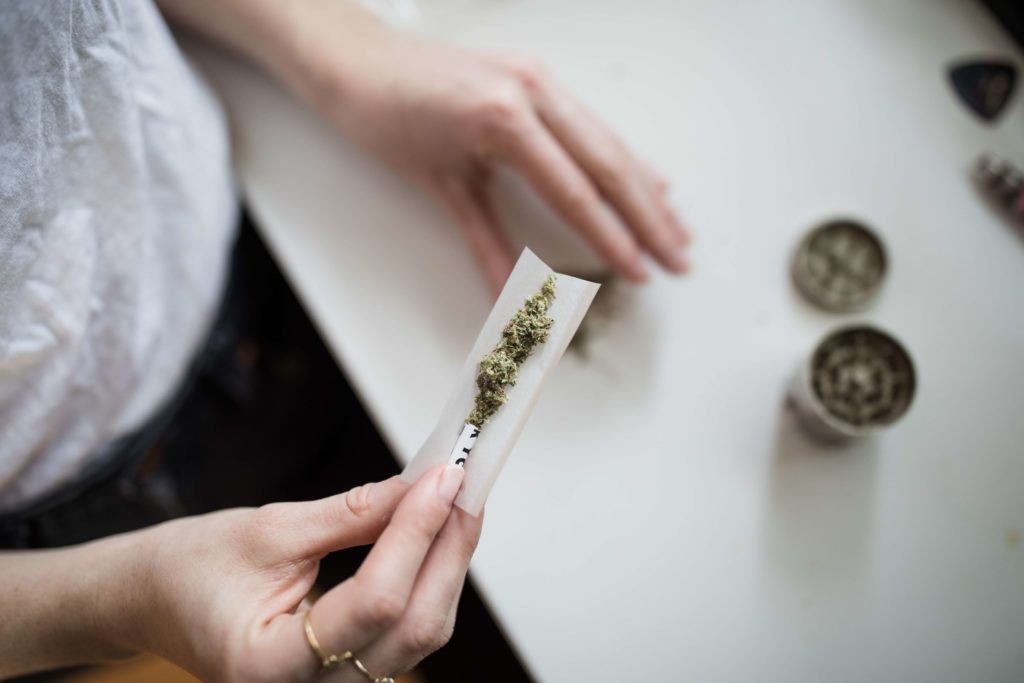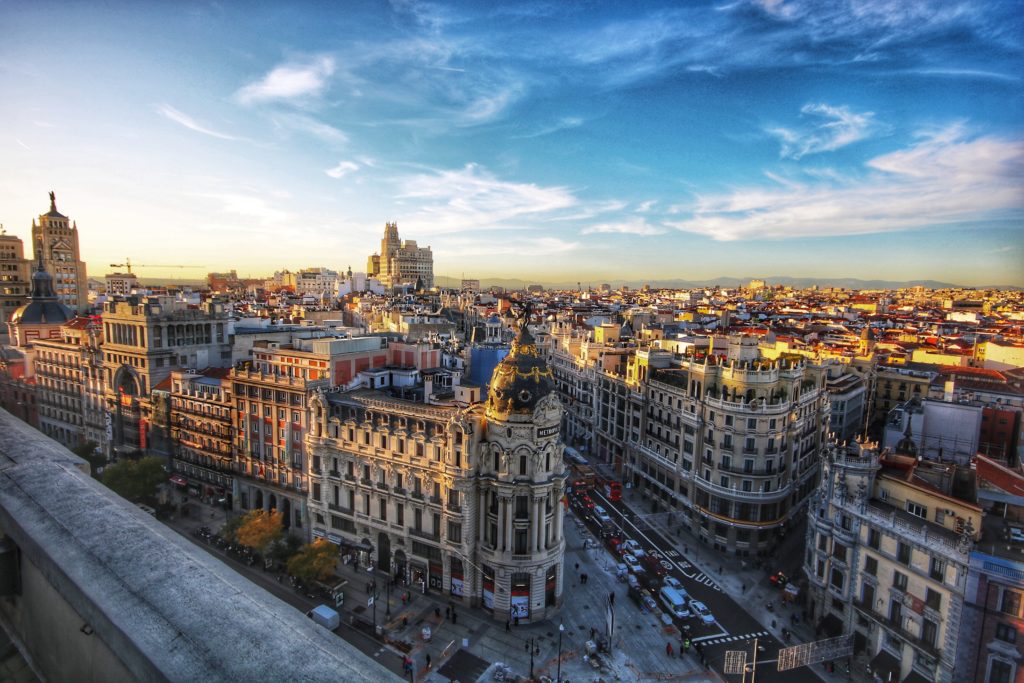Minors who are exposed to marijuana may risk experiencing psychotic breaks later on in life, according to psychiatrist Manuel Mas-Bagàs. Some marijuana strains have a dangerous, uncontrolled level of THC, the plant’s psychoactive component, and many children have access to these. This has caused great concern to health authorities. In Spain, marijuana is the most consumed illegal drug.
Is marijuana use out of control in Spain?


For years, he dedicated himself to the cocaine business. However, this trafficker from Spain, for obvious reasons, asks to hide his identity. “The selling price does not stop rising and for us to acquire it is much cheaper than other drugs. Right now it’s much more profitable than cocaine and it’s also better than heroin.
The drug trafficker also affirms that the marijuana boom has only just begun: “There are more and more. It’s got it all: good price, good market, and good product image.”
A substance toxic to the brains of minors
“In minors who abuse marijuana, psychotic outbreaks are the order of the day. We are constantly meeting them,” explains psychiatrist Manuel Mas-Bagàs. “Marijuana intoxicates the young brain. It causes problems with attention, concentration, and memory. Abuse can lead to anxiety and even outbreaks of schizophrenia.”
“There are real risks for young people,” adds Beatriz Martín, the director-general of the Fundación de Ayuda contra la Drogadicción, “that we are not focusing on, as we do with other substances. Mas-Bagàs adds, “I don’t put it at the level of cocaine, but depending on how and by whom, the effects can be just as damaging. It’s a drug, and its use in teenagers can have serious consequences.”
Dangerous and uncontrolled levels
Joan Parés, a medical specialist in cannabis, points out a key point in this risk consumption. “The lack of control and regulation makes it the mafias that dispense marijuana. So many children have access to substances with a dangerous, uncontrolled level of THC,” she said.


THC is the psychoactive compound of marijuana. Depending on the percentage you have, the effect and risk are greater. There are new varieties of increasingly aggressive marijuana. Royal Gorilla, Green Gelato or Hulk Berryall from the United States are some of the strongest, with THC percentages sometimes exceeding 25 percent, when the usual is between 4 percent and 14 percent. And Greek is the most powerful you can find, with a THC percentage that exceeds 27 percent. If a teenager consumes one of these varieties without being aware of it, he could suffer serious consequences.
50 organizations in Spain
The latter is one of the issues of greatest concern to health authorities. And, according to the Ministry of the Interior, the cultivation of cannabis plants has increased considerably. Sources from this agency estimate a 60 percent increase in police interventions related to marijuana and estimate that there are about 50 organizations in Spain dedicated to trafficking in this substance when about five years ago barely dealt with a handful of small groups and without organizing. The police are now talking about big plots.
Ana Villagómez, the Anti-Drug Prosecutor of Cádiz, explains that the increase in crops has been very much noticed. He said, “Here before there were some loose greenhouses. Now there are nets that own chalets. They rent them out, dismantle them whole and dedicate them to planting. They grow up to four crops a year, thanks to transgenic seeds.”
The penalties for marijuana
Villagómez adds that marijuana also tends to be less risky for drug traffickers. “It’s considered minor and the judges hardly ever estimate prison even if we catch them with a large crop or with large quantities,” he explains. The narco who remains anonymous agrees: “The good thing about marijuana, what is attracting many, is also that the punishment is less.
The penalties for marijuana trafficking range from one to three years in prison if they do not exceed 10 kilos, and if they exceed this amount, three to four and a half years. On the other hand, for the hashish, the penalty arrives until the four years and a half when the drug intervened surpasses the 2,5 kilos. And in addition, as the hashish has to be brought mainly from Morocco, the sentence can reach six years and nine months of prison if you use boats and exceed 2,500 kilos.
Marijuana is the most consumed illegal drug in Spain, with 11 percent of the population admitted having tried it in the last year, according to the latest Survey on Alcohol and other Drugs in Spain of the Ministry of Health. The percentage grows up to 35 percent when we talk about having consumed it once in a lifetime. In other words, more than a third of the population.
Legalization
In Spain, according to CIS, 84 percent of citizens are in favor of the legalization of marijuana for therapeutic purposes. Meanwhile, 47 percent defend their legalization in all cases, including recreational.
THC (tetrahydrocannabinol) levels in these plantations are not regulated. For example, Uruguay and certain states in the U.S. have decriminalized marijuana. Canada, Brazil, Australia or Chile, among other countries, allow its consumption for therapeutic purposes. In Spain, it is not illegal to consume in private spaces or to buy some seeds. But buying and selling and public consumption are penalized, so the THC of what is consumed depends on what each organization decides, which is illegal, does not pay taxes and sells to anyone, including minors. And this leads to the debate over which the marijuana issue has been revolving for years: the need to focus on a substance that carries risks and is beyond the control of the authorities.
A political, social, and health debate
In October, Miguel and two friends opened in the center of Madrid the Cannabis Store Amsterdam, a franchised store that sells all kinds of products related to marijuana and whose symbol is a hemp leaf. A few weeks after the inauguration, a group of police officers showed up at the facility. “It was quite unpleasant, actually,” Miguel says. “We obviously don’t sell anything that contains THC [the psychoactive component of cannabis], but we had to go through that.”
The police irruption in a legal store defines the scenario of the marijuana in Spain: a substance of illegal trade but of legal consumption, that has an image that, on occasions, trivializes its risks and on which an enormous politicization exists. “Marijuana, in general, has a political and sociological significance,” says Beatriz Martín, director-general of the Fundación de Ayuda Contra la Drogadicción (FAD).


Playful and therapeutic
There are other elements that contaminate the marijuana debate. One of them is the confusion between therapeutic and recreational use. Another factor is marketing.
According to FAD, 25 percent of teens say the risks of marijuana are worth it. “There is a higher social tolerance than with any other drug. And that there is little perceived risk directly affects consumption,” Martin completes.
The latest study on drugs of the Ministry of Health indicates that adolescents between 15 and 17 years double in marijuana consumption to those over 35 (12.6 percent compared to 5.5 percent.) The data from the Proyecto Hombre Observatory put the age at which consumption begins at 16.5 years of age.
—
(Featured Image by Thought Catalog)
This article was translated and adapted from the original, which was previously published in El Pais. In case of a discrepancy, the original will prevail.
While reasonable efforts are made to provide accurate translations, some portions may be incorrect. No liability is assumed by Hemp.im for any errors, omissions, or ambiguities in the translations provided on this website. Any person or entity that relies on translated content does so at their own risk. Hemp.im shall not be held responsible for any losses caused by such reliance on the accuracy or reliability of the translated information. If you would like to report a translation error or inaccuracy, we encourage you to please contact us.



Comments are closed for this post.